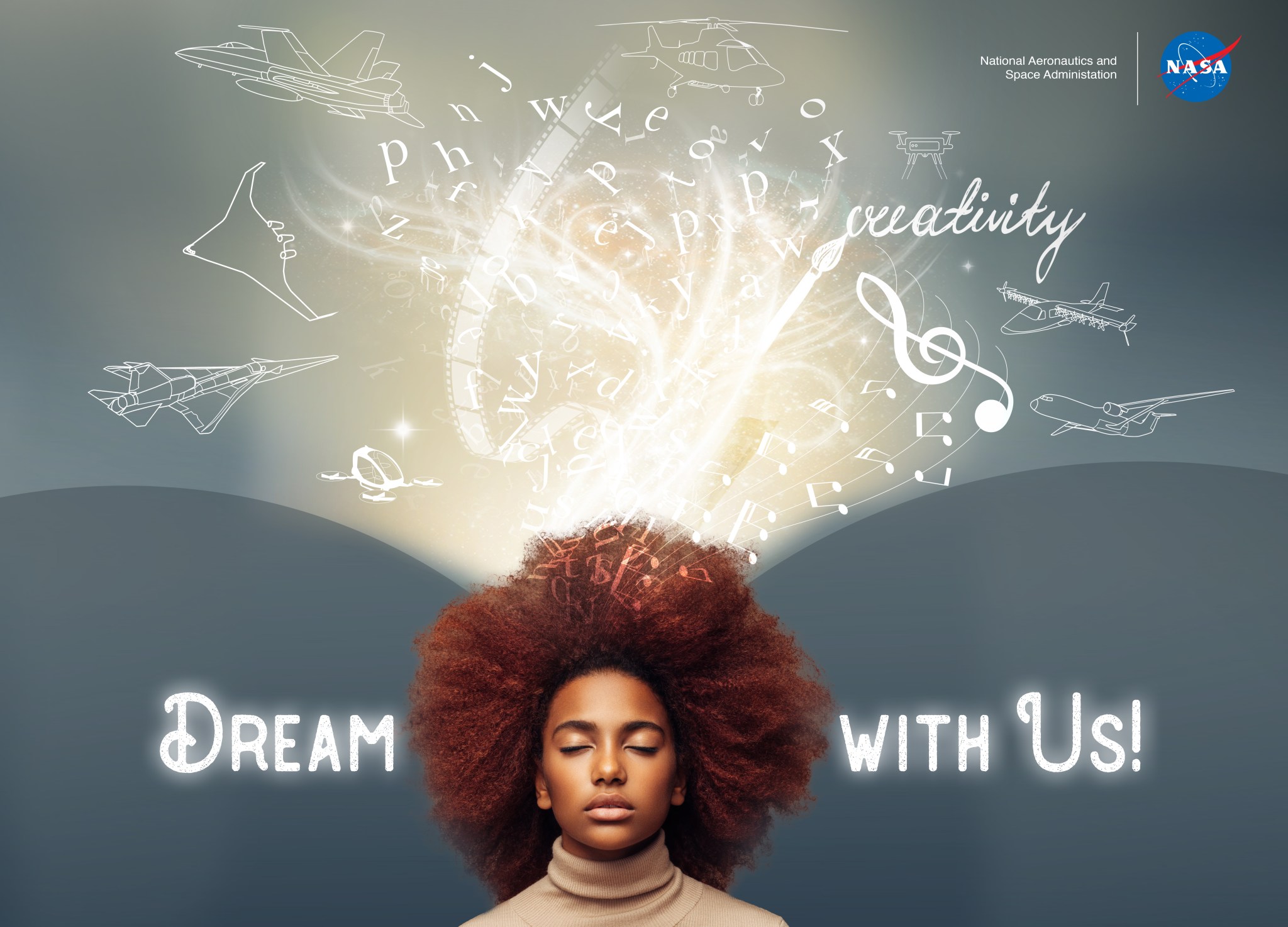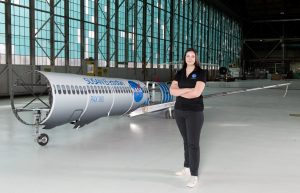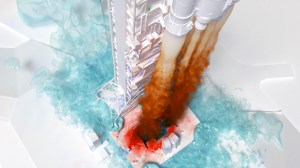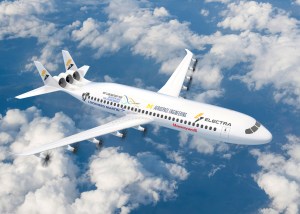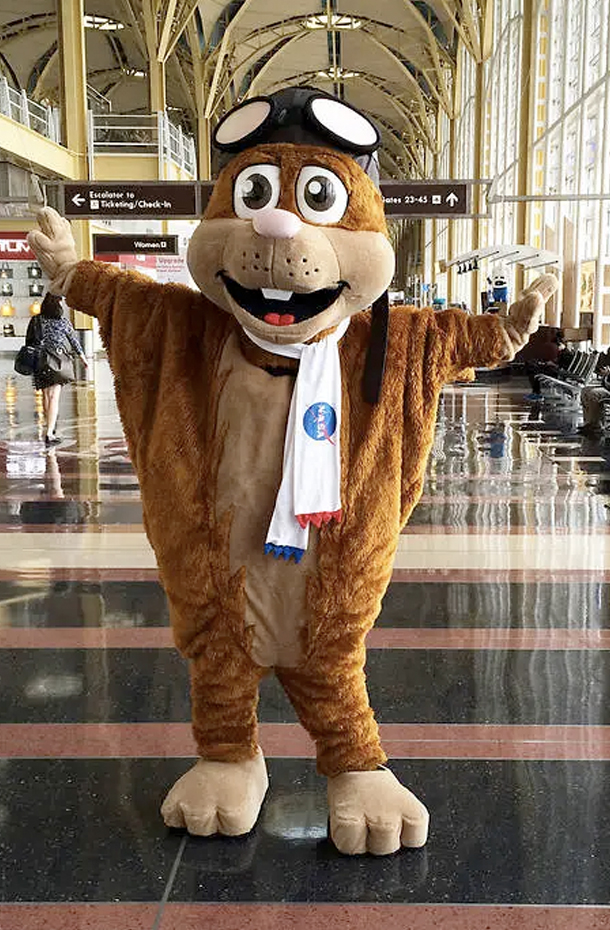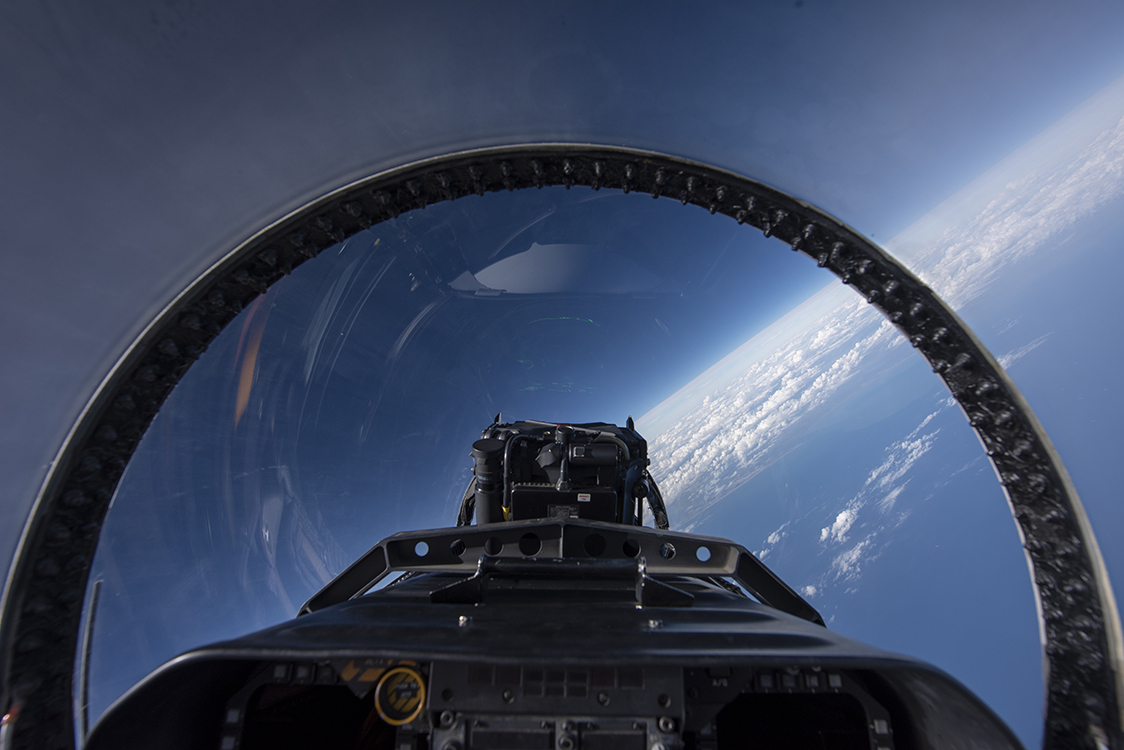Virtual Recognition Ceremony
Join the Dream with Us Recognition Ceremony to celebrate the students dreaming with NASA about the future of natural disaster response with new aviation such as drones and air taxis.
Where: Microsoft Teams
When: May 21, 2024 @ 7pm ET / 4pm PT
Meeting ID: 211 443 798 725
Passcode: hFZjwX
Challenge Theme
Responding to Natural Disasters with New Aviation
A natural disaster is a type of severe weather with the potential to pose significant threat to human health and safety. Natural disasters, especially wildfires, affect everyone around the world. Some are affected directly and others indirectly. NASA’s Advanced Capabilities for Emergency Response Operations (ACERO) project is helping to improve wildfire coordination and operations using drones and advanced technologies. Wildfires are not the only natural disasters that affect human life, animal life, and the environment. Learn more about NASA’s ACERO project.
NASAs Advanced Air Mobility mission focuses on, in part, the drone technology needed to gather data about how these automated aircraft can help air travel be more accessible, safe, and affordable. Smaller aircraft such as cargo-carrying drones and passenger-carrying air taxis will have the capability to serve hard-to-reach urban and rural locations. The ACERO project researches the use of this technology to help with preventing a natural disaster, mitigating during a natural disaster situation, and rebuilding after a natural disaster has occurred.
The 2024 Dream with Us design challenge is asking for your help with ideas that will be shared with NASA’s ACERO project and others to design or improve current systems and technologies responding to natural disasters with new aviation such as drones and air taxis. Designs and improvements will focus on these areas:
(1) help reduce natural disaster risks
(2) help mitigate the situation during a natural disaster, and/or
(3) help rebuild after a natural disaster has occurred.
Drone technology can have hundreds of uses and we want you to dream of ways they can help with natural disasters. Since these new technologies will affect future generations, part of the challenge asks you to tell younger audiences why your drone’s work is important to them.
Submission Link & Information Sessions
Submission Link
https://stemgateway.nasa.gov/s/course-offering/a0B3d000001k6Zj/dream-with-us-2024-design-challenge
Educator Information Sessions
March 27th & April 15th @ 7pm ET
(sign-up form) https://forms.gle/xRxPvWBzM9FE8DEp8
Student Information Sessions
March 29th & April 17th @ 2pmET
(sign-up form) https://forms.gle/8vteUgshJ2q24LW9A
Use this link to join the student information session on April 17th @ 2pm ET.
Microsoft Teams meeting
Join on your computer, mobile app or room device
Click here to join the meeting
Meeting ID: 264 739 938 695
Passcode: dPfyH2
Download Teams | Join on the web
Challenge Description
Students ages 13 – 18 are invited to join with NASA Aeronautics and help us improve the ways we help with natural disasters by adding new aviation capabilities. Put together your dream team of 2 – 4 teammates and create a new design or improve current capabilities of unmanned aerial vehicles (UAVs) to:
- prevent risks that cause natural disasters
- mitigate the situation during a disaster and/or
- rebuild after a natural disaster has occurred
- and create a campaign that shows elementary-aged kids why this is important.
Build a presentation for a team of NASA experts that explains how your drone helps in one or all three of these areas. Create a campaign that teaches kids about this disaster and the work of your UAV.
You will have access to STEM activities and resources that can be used to help your team create your project. Winning teams and their school will get the chance to meet a NASA expert to share how they contribute to current aeronautics challenges. Winning designs may also be shared on our social media platforms and more.
Ages
For students ages 13 – 18.
Project submission A is for teams of students ages 13 – 15. Project submission B is for teams of students ages 16 – 18 (for teams with multiple ages, the submission category will be based on the oldest member of the team). STEM activities for grades K – 12 will be available regardless of design challenge participation.
Dates
Submissions accepted March 1 – April 30, 2024. Submission link: https://stemgateway.nasa.gov/s/course-offering/a0B3d000001k6Zj/. Winners will first be announced during a virtual awards reception (TBD) then shared on social media and the Dream with Us design challenge webpage after the reception.
Challenge Rules
The 2024 Dream with Us Design Challenge opened February 28, 2024. The submission period begins March 1, 2024, and concludes on April 30, 2024, at 11:59 pm EDT. Schools, organizations, and community groups should communicate to parents and guardians that submissions are limited to one entry per team. Entries must be submitted through the submission link on the Dream with Us Design Challenge webpage: https://www.nasa.gov/dream-with-us/. If you are an educator sponsor who would like to submit a student team’s entry on their behalf, you may do so. However, you will need signed permission forms from all parents or legal guardians that agree to the terms and requirements listed below and on the submission form.
Eligibility
Contest is open to all children ages 13-18 who are attending public, private, parochial, and home schools in the United States of America and children of U.S. military members stationed overseas. There will be two separate judging categories: one for participants ages 13 to 15 and one for participants ages 16 to 18.
Requirements
All submissions must be the original work of the students.
Students must be currently enrolled in grades 6 – 12. If you are a 6th grader but under the age of 13, your parent/guardian must create the registration for you, and complete and upload the permission slip to your account.
The challenge is limited to one entry per team.
Teams must include 2 – 4 student members.
Signed submission forms must be completed by parents or legal guardians for each participant.
Challenge submission presentations may include any of the following:
- PowerPoint-type presentation
- Typed, written plan
- Video
- Brochure
- Flyer
- Infographic
- Commercial
- Website
- Other
*Please note that any videos, commercials, websites, or similar will be submitted via a link you provide that we will need to be able to access.
Regardless of how else you choose to communicate your idea, you must also include a PowerPoint-type presentation that details how your drone can help prevent, mitigate during, and/or help rebuild after a natural disaster has occurred and detail how you will share this message with kids.
Presentation Requirements
Every presentation will have two categories: technical and creative. Both categories must be included for consideration. The presentation must include the following information:
- Technical Category
- Which natural disaster you have chosen to address?
- Why did you choose this natural disaster? Why is it important to you?
- What are the cause and effects of this natural disaster?
- Details of one or more of the following:
- How your drone helps to prevent disaster risks?
- How your drone assists emergency personnel during a disaster?
- How your drone helps rebuild after a disaster has occurred?
- (OR) How does your drone do all three?
- Details about your drone
- Image of the drone
- Specifications and labeled parts of the drone
- How is it new or an improvement to current systems and/or technologies? Compare dream design to current designs.
- Can this drone help with other natural disasters?
- If yes, explain how.
- If no, explain why not.
- Which natural disaster you have chosen to address?
- Creative Category
- Create a campaign that will reach elementary-aged kids. The campaign must include the following information.
- Tell kids what your drone does.
- How it helps the disaster you are focusing on?
- Why this is important?
- How would you teach kids about this?
- Create one or more of the following to illustrate your message to kids.
- Image
- Infographic
- Brochure
- Mascot
- Video
- Cartoon/Comic strip
- Website
- Other
- Images or artwork
- Submitted as a high-resolution image of original artwork.
- Submitted in .jpg or .png format (minimum of 2,400 pixel on the longest edge).
- BONUS (It is optional to include the following information)
- Explain synergistic technologies (team and work relationships – advantages and disadvantages).
Submitting Entries
All entries will be submitted through the gateway link found here and on the Dream with Us Design Challenge webpage. All entries must include the following:
- Signed permission form completed by parent or legal guardian of each student.
- Educators must include signed forms (completed by parent or legal guardian) for each student.
- Written description must not exceed 150 words.
- Written work and presentation submitted in a PDF format. PDFs are limited to 10 MB.
- Artwork must be submitted as high-resolution images of the original artwork in .jpg or .png format (minimum of 2,400 pixels on the longest edge).
- Any included videos must be uploaded to YouTube with a “watch URL” link shared during submission.
Judging & Criteria
Entries will be evaluated based on impact, practicality, originality, and how well the idea is communicated. Contest officials will select the top submissions and present them to a panel of five judges. Those judges will make selections based on the above-mentioned criteria to determine which projects will be recognized.
Recognition
All participants will receive a code that allows them to earn an “endorsement stamp” in the NASA Aeronautics Flight Log, which is available at https://www3.nasa.gov/flightlog/. In addition, select projects will be chosen to be highlighted and showcased through NASA social media, on our website, and in other locations as appropriate. Certificates and other recognition for select projects will also be made available. The selected project creators will be contacted individually using the email provided during registration and winners will be publicly announced on the Dream with Us Design Challenge webpage no later than June 1, 2024. Thank you for participating in the Dream with Us Design Challenge!
Virtual Recognition Ceremony
May 21, 2024 @ 7pm ET / 4pm PT
More information coming soon!
Challenge Topic Descriptions
Types of Natural Disasters
A natural disaster is a type of severe weather with the potential to pose significant threat to human health and safety.
- Floods
- Condition that occurs when water overflows over its natural or artificial barriers and accumulates over low-lying areas
- https://www.earthdata.nasa.gov/topics/terrestrial-hydrosphere/surface-water/surface-water-processes-measurements/floods
- Wildfires
- Unplanned and uncontrolled fires that spread rapidly and can be disastrous. Under control, wildfires can be essential to the ecosystem.
- https://appliedsciences.nasa.gov/what-we-do/wildfires
- Earthquakes
- An intense shaking of Earth’s surface caused by movements of the Earth’s outermost layer.
- https://spaceplace.nasa.gov/earthquakes/en/
- Volcanoes
- An opening on the surface of a planet or moon that allows material warmer than its surroundings to escape causing an eruption.
- https://spaceplace.nasa.gov/volcanoes2/en/
- Landslides
- Heavy rainfall and flooding washes away the ground of rock, debris, and earth down a steep slope causing the earth to cover everything in its path.
- https://www.earthdata.nasa.gov/learn/toolkits/disasters-toolkit/landslides-toolkit
- Tornadoes
- Form from severe thunderstorms leading to a clash between moist, warm air and cold, dry air and develop extremely strong horizontal winds that swirl around their center.
- https://gpm.nasa.gov/resources/faq/what-difference-between-tornado-and-hurricane
- Hurricanes (aka typhoons or cyclones)
- Large scale storms with extremely strong horizontal winds that swirl around their center that form over warm waters near the equator.
- https://spaceplace.nasa.gov/hurricanes/en/
- Extreme heat
- Heat wave is a period of unusually (historically) hot weather that lasts more than two days.
- https://scijinks.gov/heat/
- Extreme cold
- Snowstorms are frozen precipitation that falls in the form of snow in large, heavy quantities.
- https://espo.nasa.gov/impacts/content/IMPACTS
- Etc. (others that directly affect the entrant)
Types of Drones or Unmanned Aerial Vehicles (UAVs)
A drone is an uncrewed/unmanned aerial vehicle (UAV) used to perform jobs with a drone pilot using a remote control or autonomously, without a pilot or a remote control. Small drones can be used for observation, mapping, or package delivery, while larger air taxis will have the capability to transport people. Uncrewed/unmanned aircraft systems is the term that emphasizes drones as a system. Click on this link for more information about uncrewed/unmanned aircraft systems.https://ntrs.nasa.gov/api/citations/20170011510/downloads/20170011510.pdf
- Multicopters
- Small UAV that uses multiple propellers to fly. Using Newton’s 3rd law: the propellers action pushes air downward causing an upward force (lift) reaction against gravity causing the quadcopter to move up. The number of propellers names the copter: 4 propellers = Quadcopter, 6 propellers = Hexacopter, and so on.
- https://www.nasa.gov/wp-content/uploads/2020/05/aam-science-behind-quadcopters-reader-student-guide_0.pdf?emrc=8caa02
- Rotorcraft
- Autonomous aircraft that uses one or more rotary wing to generate lift.
- https://www.nasa.gov/wp-content/uploads/2021/09/uas-appendix.pdf?emrc=60b6fb
- Sm/Med/Lg Fixed Wing
- Familiar 3-segment design with longer endurance than VTOL UAVs.
- https://technology.nasa.gov/patent/LAR-TOPS-293
- Air taxi
- Large autonomous aircraft that can carry people relatively short distances
- https://www.nasa.gov/centers-and-facilities/armstrong/nasa-studies-human-pilots-to-advance-autonomous-air-taxis/
- Vertical Take-Off and Landing (VTOL)
- Autonomous vehicles used to carry people that rely on vertical take-off and landing capabilities.
- https://www.nasa.gov/wp-content/uploads/2020/05/aam-air-taxi-design-challenge-educator-guide_0.pdf?emrc=c0b9bf
Resources
- ACERO
- Post-secondary Challenge: Gateways to Blue Skies
- How to Register Your Drone
- Remote Identification of Drones (“digital license plate”)
- Trust Certificate (any drones)
- Activities
- What is AAM?
- Package Delivery Drone Simulation
- Attack of the Drones
- Air Taxi Design Challenge
- Determining the Center of Gravity
- The Science Behind Quadcopters
- Flight Control Math 1 Graphing
- Flight Control Math 2 Using the Distance Formula
- Flight Control Math 3 Using Distance Formula & Speed Formulas
- Flight Control Math 4 Using the Pythagorean Theorem
- Flight Control Math 5 Finding the Equation of a Line and the Point of Intersection for Two Lines
- Small Unmanned Aerial Vehicle Safety
- Sensor Solutions
- Propelling the Payload with Electric Propulsion
- Videos
- Dream with Us video
- What is AAM?
- NASA Flight – What is AAM?
- Advanced Air Mobility (AAM) Playbook Video Series
- NASA STEM Stars: Project Manager, Roberto Navarro (en español)
- NASA STEM Stars: Unmanned Aircraft Systems, Michael J. Logan
- Floods iQuest
- The Environmental, Economic and Social Impact of Drought
- Lifecycle of a Hurricane
- How UAS Impacts the Future
- NASA STEM Stars: Chief Pilot and Model Lab Operations Engineer, Robert “Red” Jensen
- NASA STEM Stars: Principal Investigator of UAM Airspace Theory, David Zahn
- NASA UTM: A Giant Leap for Air Transportation
- Literacy
- For Educators
- Advanced Air Mobility (AAM) STEM Toolkit
- Disasters Toolkit
- NASA’s Eyes on Extreme Weather
- Types of Clouds and What They Mean (K-3)
- Joint Polar Satellite System STEM Activity: Just in Case
- Investigating the Climate System – Weather
- Unmanned Aircraft Systems
- AAM STEM Learning Module
- UAS Traffic Management (UTM) Project
Educator Professional Developments
A Dream with Us virtual educator professional development will be scheduled for March 2024. Educators can also request a virtual professional development session to better understand the Dream with Us Design Challenge and how to apply. Educators may also request a virtual student session for a classroom/group to better understand the challenge, learn the requirements for applying, and ask questions. Request a virtual student or educator session at aeroSTEM@nasa.onmicrosoft.com. Please be sure to include valid contact information (name, email, phone, etc.) and the type of session(s) you are requesting.
Educator Sessions
Dates: March 27th and April 15th
Time: 7pm ET
Sign up form: https://forms.gle/fhf6oxBUkFUaqGd5A
Student Sessions
Dates: March 29th and April 17th
Time: 2pm ET
Sign up form: https://forms.gle/6dxJ3uj8DLk1a7fF9
Questions
Do you have additional questions about the Dream with Us Design Challenge? Reach out to the NASA Aeronautics STEM team at aeroSTEM@nasa.onmicrosoft.com.



























